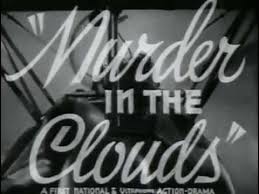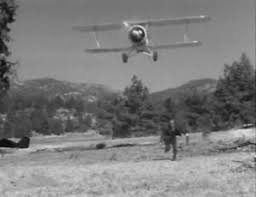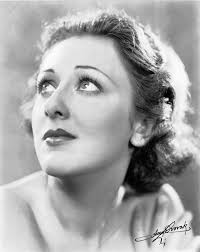Murder in the Clouds (1934)
IMDb meta-data is 1 hour and 1 minute, rated 6.0 by 186 cinematizens.
Genre: Mystery
Verdict: Go girl!

Clichés have to start somewhere. Nebraska’s own Lyle Talbot before he descended to the ranks of character actors is Three Star, a hotshot flyboy who boasts, brags, and shows-off, reminds me of that midget. We never do know if Three Star’s flying days began in the Great War, nor why he is called Three Star, apart from the three stars tattooed (it seemed) on his narrow, pasty chest. Why not four star? No room. Or just Star? Still I rather like it that there is no tedious backstory.
Before LAX ate Westchester a number of small airports served Los Angeles, and one, now long gone, was at Glendale. This drama takes place in the wide open spaces there.
Three Star, after character-establishing antics, is assigned a top secret mission, while unnamed enemy agents listen in, and then Three Star promptly goes to a bar and gets into a fist fight set up by the nefarious villains, which he loses, three to one. The next morning when he is a no-show for the top secret mission, there just happens to be another pilot right there to volunteer for it. Guess! Yes, this one is another plant by the unnamed enemy.
The co-pilot for this flight is the callow younger brother of Ann Dvorak, the airline’s only cabin crew. On board is an egghead with his invention, which is something to make boom, as if we are ever short of that. Whoops! The plane blows up in mid-air. Was it a Boeing Max? Well maybe, but skulduggery is afoot.
To keep it simple, the plant pilot (after eating Mexican beans) gassed the crew and passengers, took the secret device, and parachuted out after setting a time bomb. Kablooie! Four dead ducks. Some design fault.
Three Star with a nary a word of regret or apology sets out to recover the device, once it is not found in the wreckage. So far, so standard.

Here’s where it gets more interesting. Dvorak, seeking information about her now missing brother, the co-pilot, gets taken in by the villains, led by the redoubtable Russell Hicks, tall, distinguished, thoughtful, cultured, impressive, avuncular, and evil. Hicks and company trick her into helping them abscond with the device. So they think.
In fact, she soon realises their murderous larceny by accident and in a great scene thinks through in silence what she has heard and seen, and arrives at the conclusion to out trick them, and she does with a little help from the McGyver Manual. Marvellous!
She had overheard the news that her brother was dead, but stifled the stereotypical consequent female hysteria in the screenwriters paucity of imagination and turned the tables on the villains. Go girl!
Three Stars then flies around for ten minutes at a time. Remembers those underwater sequences in Thunderball (1965) that go on and on without advancing plot or character. Ditto here. It no doubt had novelty value at the time of release, 15 December 1934, and it is nicely done, but too much is too much (except for Dolly Parton and Arnold Schwarzenegger).

Ann Dvorak had a reputation in Hollywood for being difficult, according to the Harvey Weinsteins of the day. She was not compliant with his sort, whatever that may be, and, in addition, she resiled at the fluff she was forced to play and complained about it a lot. One suspects that her attitude influenced the portrayal of this disciplined, resourceful, and determined heroine. No doubt her personality was the result of reading too much, because her IMDb biography terms her a bibliophile who collected first editions.
When she realised she was being paid the same as the juvenile actors in one film, she bought herself out of the Warner contract. Gutsy, indeed, in that fraternity. The material was bad enough, but to be paid peanuts for it was the last straw. Later she married a Brit and moved to Old Blighty where she drove ambulances during World War II in the Blitz. No bone spurs were detected.

